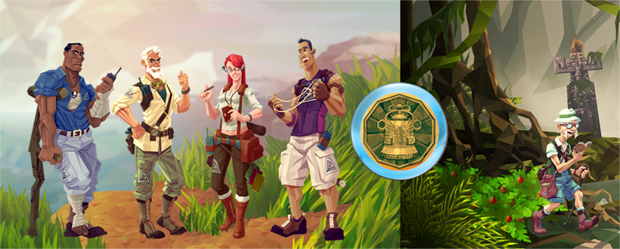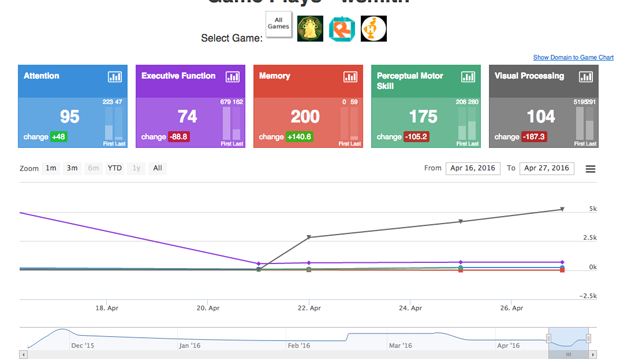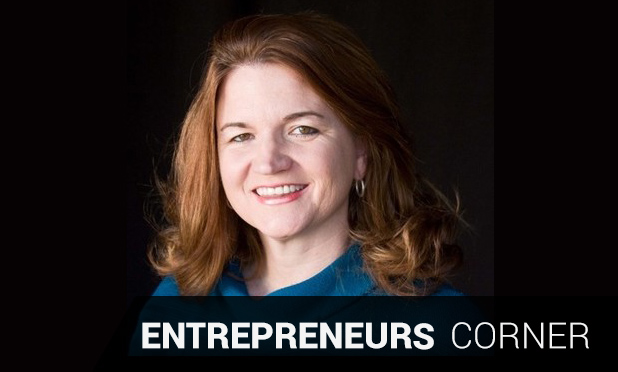Serious games are those designed for purposes other than mere entertainment. They have applications in many industries, including defense, education, and health care. Blue Marble Game Company of Altadena, California, has based its value proposition on a variant of this concept. Its lines of products, which are aimed at neurophysiological wellness assessment and rehabilitation, employ a number of what are known as “neurogaming technologies.” Ahmed Morsy, IEEE Pulse Deputy Editor in Chief, had the chance to interview Sheryl Flynn, Founder and CEO of Blue Marble Game Company.
Morsy: Therapeutic neurogaming is certainly an interesting concept. What makes Blue Marble games special?
Flynn: Neurogaming implies that a software/hardware product combines science and game theory to positively impact neurophysiological processes that lead to improvements in human function. Data generated from these products also provide actionable information to inform care delivery. Therapeutic neurogaming is the use of neurogaming technologies for the purposes of health, wellness, and/or rehabilitation. Blue Marble Game Co. is special because of our radical emphasis on precision in data metrics, our in-house clinical research and development teams, and our strong focus on developing engaging products.

Morsy: How do these games work?
Flynn: The Blue Marble platform supports two main product lines, cognitive (Cognitive Assessment and Training Tool – CATT) and physical (Health In Motion). Our cognitive platform has digital gamified assessments that measure attention, memory, visual processing, executive function, and perceptual motor domains. The assessments can be used to measure change in cognitive function before an injury occurs (as in the case with athletes who can get concussion), for tracking the effects of medication (as in the case of a person receiving medication for ADHD), or to measure changes after neurological injury (as in the case of a stroke), or cognitive decline that occurs with normal aging. Our cognitive training tools look and feel like traditional video games and play for many hours. Treasure of Bell Island, for example, is a strategic adventure game that challenges attention, executive function, memory, perceptual motor, and visual processing domains (see Figure 1). All of the data captured from the assessments and training apps is visualized via our web-based data dashboard that we call DeepOcean (Figure 2). CATT was funded by the Department of Defense, and as such we are launching a “Help A Vet Heal” campaign in which we hope to use proceeds of the sale of CATT to provide veterans with mild traumatic brain injury with our game at no cost.

Our Health In Motion platform is focused on measurement of fall risk and delivery of fall prevention exercises for adults over the age of 60 (Figure 3). Health In Motion assesses risk by guiding the older adult through a series of science-based questionnaires and physical performance tests and then provides them with a fall risk summary. All users then receive scientifically validated exercise programs that improve balance, leg strength, and function in order to reduce the likelihood of falling. This year we are launching a “Prevent 1 Million Falls” campaign in an effort to prevent older adults from falling and sustaining a catastrophic injury such as hip fracture.
While the apps are centered around patient performance improvements, ease of use and clinician facing dashboards improve clinical workflows and extend the provider’s clinical reach by enabling patients to complete assessments and interventions within their home environment, at the place and at a time that is convenient for them. With this option, providers can treat more patients using the same or fewer resources.

Morsy: So what was the “eureka moment” that led you to start Blue Marble?
Flynn: There were actually two eureka moments: 1) As I was wrapping up my post-doc in neuroscience where I was studying how enriched environments can be used to motivate recovery of function following spinal cord injury in the adult rat, I observed children playing the first generation gesture tracking video games on the Sony PlayStation 2 (using the EyeToy). I noticed that the children were very motivated to move their bodies in an effort to succeed in the game, and I thought, EUREKA, maybe this is a way to motivate humans to recover following nervous system injury. So I changed course and started studying off-the-shelf video games. 2) After a few years of studying off-the-shelf video games and their use in rehabilitation, I found that while there were many aspects of these games that were very helpful for rehab, some things were missing, such as human performance metrics (data). Also feedback was lacking, confusing, and negative; and game levels were poorly designed for people with impairments. So EUREKA number two was to start a company focused specifically in designing and developing games from the ground up for rehab purposes.
Morsy: How accepting have you found the market so far?
Flynn: The market is ready and accepting. Patients enjoy the apps, clinicians see the value in the data the apps provide, and healthcare systems and accountable care organizations understand how the apps can provide population data.
Morsy: What is the most satisfying part of your job as an entrepreneur?
Flynn: The most rewarding aspect of developing these apps is seeing them in action—seeing patients and clinicians using the apps to help them improve their health and improving healthcare delivery. I have an extraordinary team, and working with my team each day is incredibly rewarding and humbling. They teach me so much. I’m very fortunate to lead this organization.
Morsy: And the most challenging part?
Flynn: Consistent funding. We have been very blessed with support from both the Department of Defense and the National Institutes of Health for all of our R&D, but long term planning is difficult when depending on government grants/contracts. Another challenge we have faced is similar to the challenge Apple faced when trying to convince everyone that they needed a smart phone. Today we say, “What did I do before I had a smart phone?” And as was the case with calculators for accountants and ATM machines for tellers, anytime a new technology comes along people resist change and sometimes fear it. But after demonstrating our value proposition they begin to see how our products improve work flow, reduce overall cost of care delivery, improve outcomes and quality of life, and improve patient satisfaction.
Morsy: Anything you would do differently if you could?
Flynn: I would start smaller. Many of our early apps were very complex and comprehensive. In hindsight, I think we could have avoided numerous code rewriting if we had started with smaller, more manageable chunks and scaled over time. I would also begin with a partnership with a healthcare system so that we can co-develop the products to address real immediate problems.
Morsy: I’d like to close with a piece of advice that you might offer to potential future entrepreneurs.
Flynn: Follow the lean start-up method. Start with a customer and co-create your solution, then, go for it. The time is ripe. Change will come and is much needed. People are much more empowered to take charge of their own health care and providing them with software to do that is essential. Providers and payers want to better understand their population in order to serve them better—we need a lot of essential data to inform medical practice and to ensure that all people receive the appropriate care founded on sound scientific evidence.



